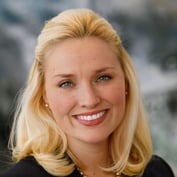What You Need to Know
- The rate of participation in formal charitable giving has fallen significantly among American households, though the amount of giving has increased.
- Experts say this concentration in giving among the wealthiest households should concern charities that rely on public funding.
- Greater concentration of wealth could also leave advisors competing for a shrinking pool of prospects, Laura MacDonald warns.
Reflecting a broader trend in the U.S. economy, charitable giving has become much more concentrated over the last two decades, with top-end donors representing a far higher proportion of total giving today.
Just a few decades ago, more Americans gave regularly to charity (65%) than voted regularly in elections (58%), according to data from Giving USA’s latest annual report on philanthropy. Since that time, however, household participation has declined steadily, and fewer than half of all households now report making a charitable gift each year.
As Laura MacDonald, principal and founder of Benefactor Group and the immediate past chair of Giving USA, recently told ThinkAdvisor, the overall amount of giving continues to grow because high-net-worth households have steadily increased the amounts they give.
While this may sound like a positive situation, MacDonald says, the reality is that a shrinking pool of donors means philanthropic causes face new risks — namely that they could find themselves falling out of favor with fewer, bigger donors and facing a feast-or-famine situation that makes planning for the future increasingly difficult.
Though it may seem like an ancillary issue, MacDonald argues financial advisors should also be concerned about these dynamics, as their own practices could be exposed to some of the same risks that are emerging among charities and philanthropic organizations. That is, a growing concentration of wealth among a smaller number of families could leave advisory organizations scrambling to secure and retain clients from an ever-shrinking pool of attractive prospects.
In the end, MacDonald argues, wealth managers should strive to stay ahead of the latest developments in the charitable giving marketplace. Not only will this help advisor professionals stand out among a coveted client group, it will also help them have a positive effect on their local, regional and global communities.
Dollars Up, Donors Down
As MacDonald observes, charitable giving has become more concentrated during the last two decades, with top-end donors representing a higher proportion of total giving than ever before.
There is debate about the cause of this imbalance, she says. On the one hand, individuals may have lost some faith in the power of philanthropy, as evidenced by declining trust in institutions of all types. There also seems to be a link between declining religiosity and a decline in organized giving.
Other potential causes are the fact that middle-income and even mass-affluent households are being squeezed by higher inflation and stagnant wages. And there are also occasional attention-grabbing headlines about charity wrongdoing, which can easily crowd out positive messages from the vast majority of nonprofits doing good.
Another potential factor, MacDonald says, is the growth of sophisticated fundraising operations that shower attention on big givers, with far less effort being made to address the giving goals of those of comparatively modest means.
In the end, MacDonald observes, the financial advisor industry alone cannot do much to directly address these systemic factors, but its practitioners can help their clients cut through the noise and remain focused on giving assets to their preferred causes.
Key Trends and Challenges
In MacDonald’s experience, advisors who can help their clients give to charities in a tax-efficient way are highly valued, but to achieve the best outcomes, it is important to keep the giving in focus rather than the potential for tax efficiency.
“The reality is that when you give to charity, there is no tax strategy or planning approach that will allow you to avoid paying any taxes or avoid having money leave the estate,” MacDonald says. “Advisors and donors should keep this goal in mind, because it gives you a framework for achieving the maximum tax benefits, so that the maximum amount of money can go to the charity.”
According to MacDonald, whatever type of giving a client is engaging in, from starting a foundation to launching a donor-advised fund, doing the appropriate research is critical.









 August 21, 2023 at 04:22 PM
August 21, 2023 at 04:22 PM











